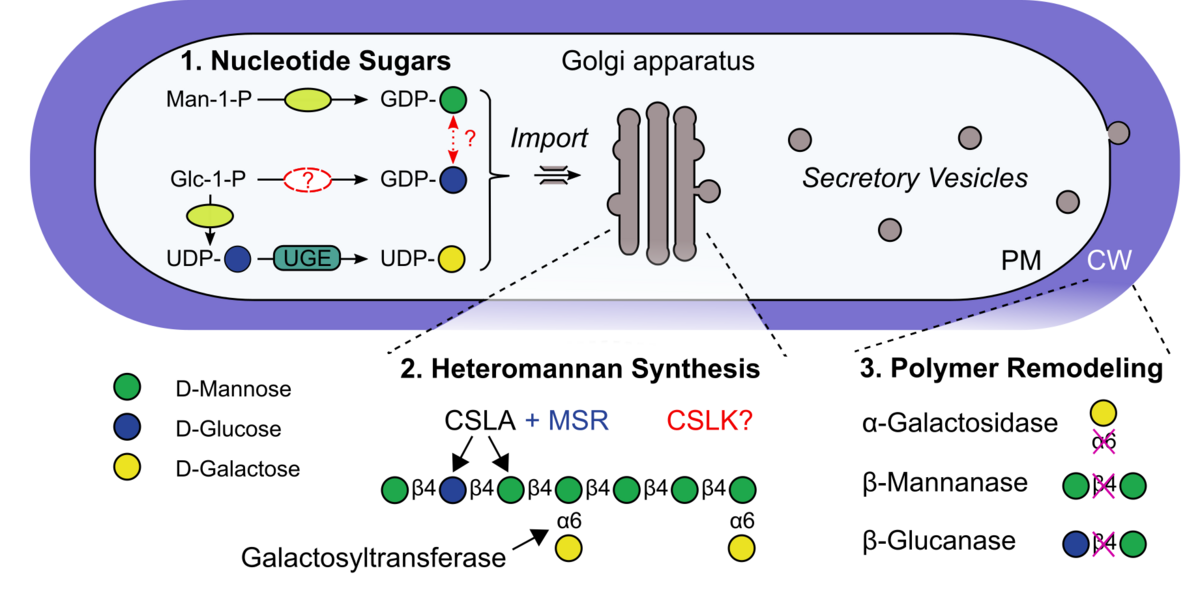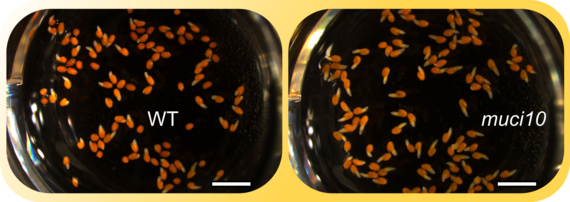Projects
Plant cell walls primarily consist of cellulose microfibrils cross-linked by hemicellulose and, to a lesser extent, pectin. Junctions between these distinct classes of polysaccharides govern the biomechanical properties of the wall. The genomics and transcriptomics era has ushered the identification of multiple genes involved in heteromannan (HM) biosynthesis (Fig. 1), most of them remain to be functionally characterized. With support from the German Research Foundation (DFG), we are characterizing carbohydrate-active enzymes putatively involved in HM biosynthesis by heterologously expressing them in the yeast Pichia pastoris and plants (first in the model Arabidopsis thaliana). After expressing cellulose synthase-like A (CSLA) enzymes, yeast cell walls rapidly accumulate large amounts of HM polymers (Voiniciuc et al., 2019, PNAS). Using this platform, we discovered the activity of the previously uncharacterized CSLK clade and assembled modular CSLA enzymes that tailor yeast growth (Robert et al., 2021, bioRxiv). In parallel, we are developing novel biosensors for the non-invasive imaging and high-throughput screening of HM production.
On the plant side, we are characterizing natural varieties and engineered mutants for changes in cell wall architecture. For example, we discovered that HM structure modulates Arabidopsis seeds survival in salt water (Fig. 2, Yang et al., 2020, New Phytol).
This page was last modified on 27 Jan 2025 27 Jan 2025 27 Jan 2025 27 Jan 2025 27 Jan 2025 .



